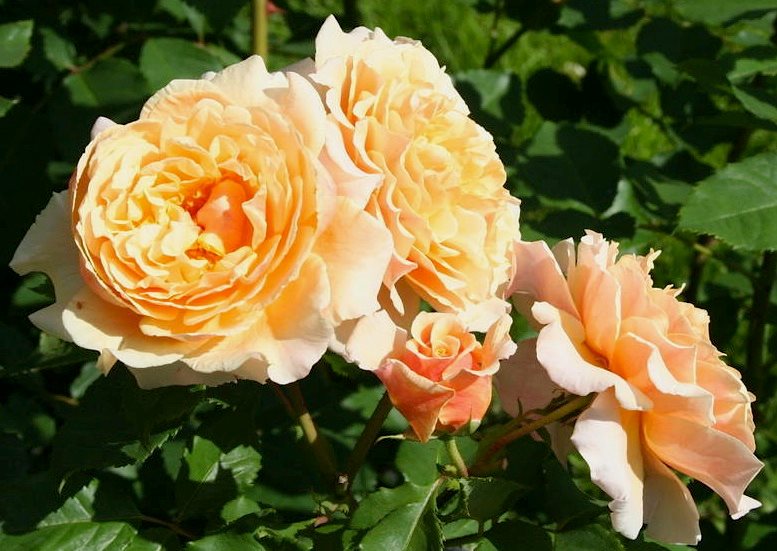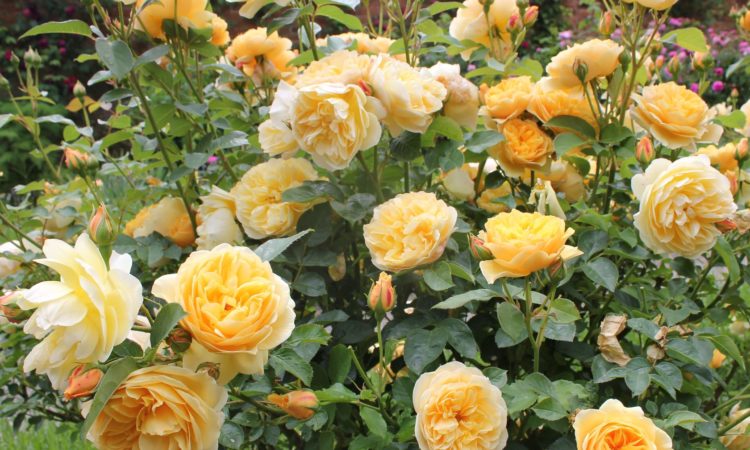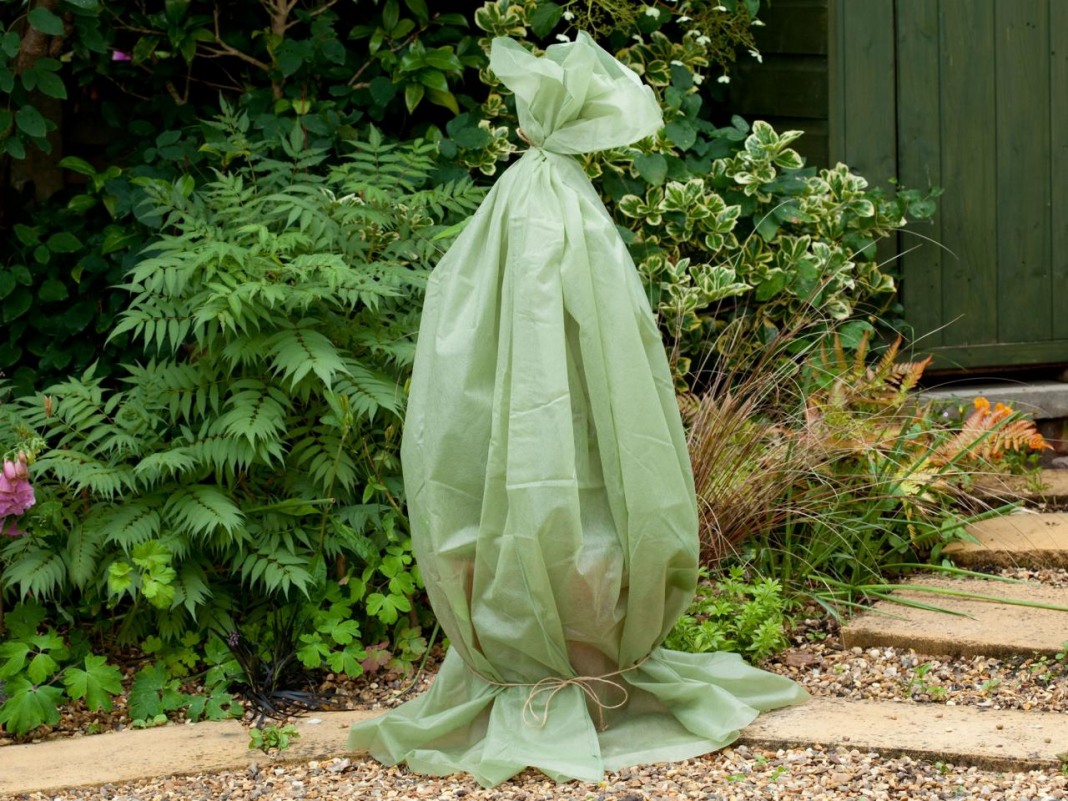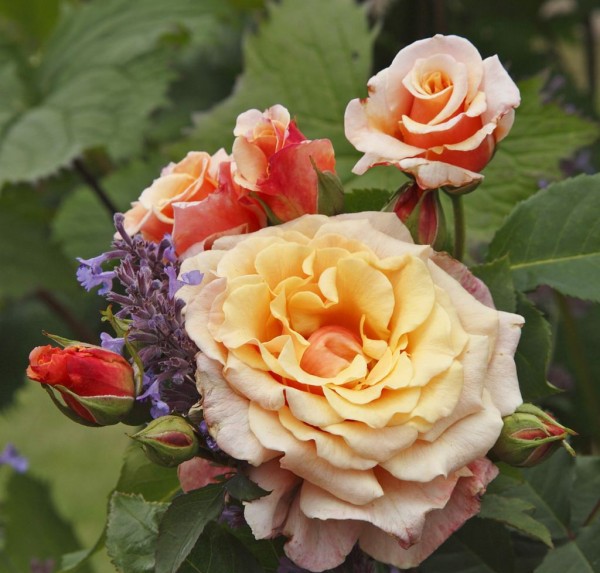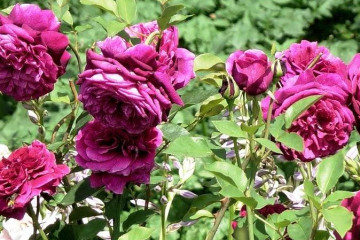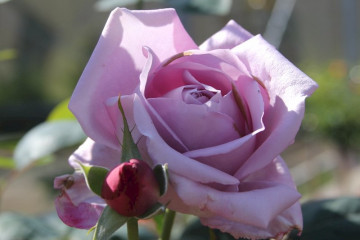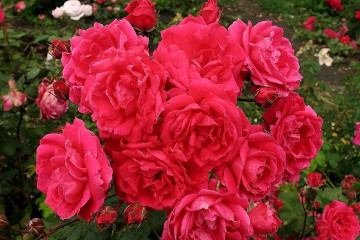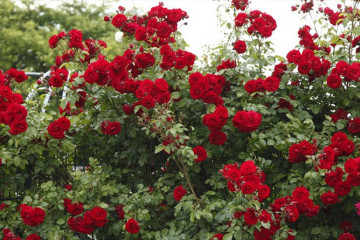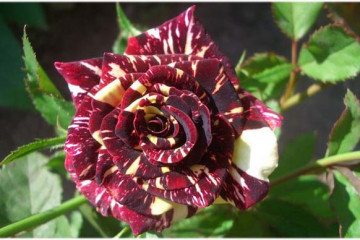Rose Caramella
Content:
Rosa Caramellla was bred at the beginning of the XXI century in a nursery in Germany. Refers to scrubs, this is a class of the international garden classification. Its other name is modern park roses or shrubs. Caramella is a semi-leafy plant ideal for landscaping.
Rose Caramella is popular among flower growers for its endurance and discreet beauty. It will transform any garden area and will not take long to maintain. Caramella refers to nostalgic roses, looks like artificially aged. The name is consonant with the Carambol rose, but its buds are distinguished by a bright orange color.
Short description
Rose buds are caramel in color, they can be amber yellow or pastel. They show orange strokes. The diameter of the flower does not exceed 10 centimeters. Up to three goblet buds can appear on each stem. The bush turns out to be about 120 centimeters.
The leaves are large, dark green, smooth. They set off the delicate color of the buds. During flowering, a delicate pleasant aroma with fruity notes appears.
Rose Caramella has an unpretentious character, adapts to any weather conditions. The plant survives both in frost and in the hot season, it is resistant to dampness. Therefore, the rose rarely suffers from fungal diseases. In the rainy season, you should not risk it and it is better to carry out preventive treatment of the leaves with special solutions.
Use in landscape design
Rose Caramel refers to ground cover roses or border roses. Therefore, it is used to decorate lawns. Due to the compact size of the shrub, it can be planted in flowerpots.
An excellent use case is the design of rockeries. This is an element of landscape design in the form of mountains, created from stones and plants.
You can plant a rose singly, in groups, or together with other plants. Compositions that combine several colors will decorate any lawn.
Growing a flower in the open field
The plant takes root well in the gardens of the middle lane. Due to its unpretentious nature, it pleases with flowering from two to four times a year.
Planting a plant
Planting begins with the selection of seedlings. Annual plants work best.
Simple tips will help with the choice:
- the bark on the seedlings should be formed, firm and free of wrinkles;
- if the roots are dry, it is recommended to keep them in cool water for a day.
The best time to plant
Planting begins in spring, the best time for this is late April-early May. You can postpone the process until autumn, but it must be borne in mind that if the plant does not take root, it will die.
Preparing for landing
The seedlings must be prepared for planting. To do this, a day before the planned date, they are placed in a solution that stimulates root growth. For example, "Heteroauxin" is widely used. If the seedling has long roots, or they are damaged, it is recommended to shorten them. Only healthy wood should remain.The soil should be moderately acidic, breathable, light.
Location selection
The rose loves the sun, but being under bright rays all day is harmful to the plant. Better that in the afternoon the bush was in partial shade.
Landing procedure
Planting a prepared seedling is as follows:
- Dig a hole about 60 centimeters deep;
- A drainage of about 10 centimeters is placed on the bottom, most often gravel, crushed stone, pebbles are used;
- Fertilizers, manure or compost are applied;
- Pour garden soil to a height of about 10 centimeters;
- The seedling is placed in the center of the pit, the roots are straightened, and covered with earth from above. In this case, it is important that the grafting site or the root collar go deeper to a distance of about 5 centimeters;
- The soil is lightly tamped, the plant is watered abundantly.
The root collar is where the root merges into the trunk or stem. It is important not to deepen it much, otherwise the liquid may stagnate during watering, which will lead to decay of the root system.
Plant care
Climbing rose Caramella does not require much attention, leaving does not take much time. The main thing is to follow simple rules, then the plant will delight with abundant flowering several times a year.
Watering and humidity
Caramella is a drought-resistant flower. When it is warm and hot outside, watering is increased up to 2 times a week. In this case, they take about 15 liters of water per bush.
Top dressing and soil
The plant loves fertile soils, and an important condition is air permeability.
If there is a lot of clay in the soil, then you can improve it by adding:
- humus;
- peat;
- sand.
On the contrary, if the soil is too light, then this is bad for the plant. The sand quickly passes water, not allowing it to linger. In addition, in the heat, such soil heats up, which is harmful to the shrub. To such a soil, you need to add clay soil with humus and sod. It should also be borne in mind that the plant prefers a slightly acidic environment.
Pruning and replanting
Pruning is carried out in the spring after the buds appear.
She may be:
- Strong. No more than 4 buds remain on the shoots. Its goal is to rejuvenate the rose bush;
- Average. It is carried out in order to bring the moment of flowering closer and give splendor to the shrub. There should be about 6 buds on the branches;
- Weak. Carried out in summer to remove dead plant parts.
Wintering a flower
Roses are covered in winter to protect them from severe frosts. The flower will survive temperatures down to minus 7 degrees without additional help. When it gets cold, you need to huddle the ground at the roots of the shrub, cut it off and prepare the covering material. Usually spruce branches are used for this. A structure is erected over the bush, making a frame, insulation is placed on it, which is covered with a film.
Blooming and after care
If you properly care for the rose, creating comfortable conditions, it will bloom throughout the summer. Delicate yellow flowers look spectacular against a dark green foliage background.
Withered flowers are removed from the plant in the same way as other dead parts. The buds continue to be removed until the end of July. Then a couple of flowers are left before the onset of the dormant period. You do not need to cut them, thanks to them, you will get abundant flowering in the next season. After its end, feeding stops, and watering is reduced. In the fall, you do not need to moisten the soil.
Periods of activity and rest
With the onset of spring, active growth of the shrub begins, requiring resumption of watering and fertilization. At this time, the flower is fed with nitrogen-containing mixtures.In the summer, the flowering period begins, then fertilizers with potassium and phosphorus are applied. Comfortable conditions, timely watering and pruning will help extend the colorful period. In winter, the plant is dormant, accumulating strength before spring awakening.
Why does not a rose bloom
In the first year, roses usually do not bloom. There is no need to be upset about this - this is a natural process that does not mean poor care.
Improper pruning, when many healthy buds are removed in order to form a compact shrub, can also affect flowering. In addition, the rose can suffer from fungal diseases and parasites. Although Caramella is resistant to such phenomena, it is necessary to control its condition.
Flower propagation
The Caramella rose is propagated exclusively by cuttings. Other methods will lead to the loss of the characteristics of the variety.
Cuttings are prepared in the summer, and the shoots are trimmed after the first flowering. This is usually the beginning of July.
Shrub propagation is accompanied by the following actions:
- Only the lower and middle parts should be left from the prepared cuttings. There should be 2 leaves, one of which is on the top;
- Treat the base of the shoot with a root growth stimulator and deepen into the ground. Enough 3 centimeters. The distance between the seedlings should be about 5 centimeters;
- Cover the cuttings, creating a greenhouse effect;
- Water and spray every three days, keep in partial shade.
If the roses are rooted, transplant it into open ground, otherwise leave it in a container that can be dug into the ground.
Diseases and pests
In rainy and damp weather, it is better to treat the leaves of the plant with antifungal agents. Prevention will not hurt the shrub. If powdery mildew or stormy spots suddenly appear, then a soap solution will help to cope with them.
Caramel, or, as it is affectionately called by flower growers, rose Caramel, is an unpretentious plant that will adorn any garden. She looks spectacular both alone and in combination with other representatives of the flora. Proper care will allow the plant to bloom throughout the summer.
